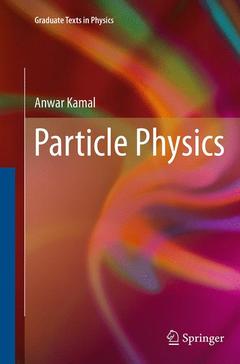Description
Particle Physics, Softcover reprint of the original 1st ed. 2014
Graduate Texts in Physics Series
Author: Kamal Anwar
Language: English
Subject for Particle Physics:
Publication date: 08-2016
Support: Print on demand
Publication date: 07-2014
529 p. · 15.5x23.5 cm · Hardback
Description
/li>Contents
/li>Biography
/li>Comment
/li>
Dr. Anwar Kamal (May 1934 – Nov. 2011) graduated from Madras University (1953) and did his post-graduation from Osmania University (1955). He obtained his Ph.D. degree from Bristol, UK (1958), under the supervision of Nobel Laureate Prof. C.F. Powell. His research work was mainly concerned with high energy physics with emulsion technique. He used the facility of Nuclear Science Centre at New Delhi, during his research period. Anwar Kamal served at Osmania University as a lecturer (1958), Reader (1969), Professor (1977-94) and the Head of the Physics Department (1989-92). He was also a Post Doctoral Fellow at Ottawa University (1967-68) and a visiting Professor at University of Tebrez, Iran (1970-73). He was appointed as Chairman, Board of Studies (1979-83). He has authored more than a dozen physics textbooks for different undergraduate and graduate levels. Some of his internationally famous books include “Solutions to Resnick and Halliday Physics”, “1000 Solved Problems in ClassicalPhysics” and “1000 Solved Problems in Modern Physics”. He has also published forty research papers in various Journals of repute and supervised a number of Ph.D. theses.
“Concepts of Nuclear and Particle Physics” was supposed to be Dr. Kamal’s first book and his dream project, but unfortunately it turned out to be his last one, his masterpiece. He passed away in November 2011, before he could see the published work.




